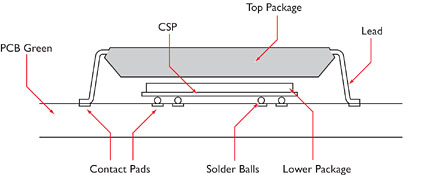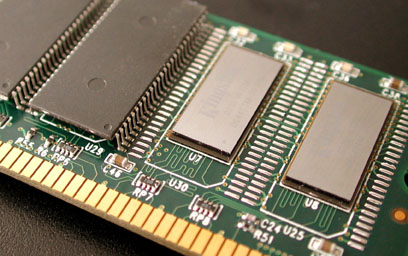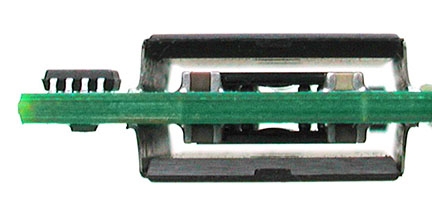Memory Module Technologies: TCP, EPOC and FEMMA
by Andy Hui on August 26, 2002 8:58 AM EST- Posted in
- Memory

The EPOC technology mounts DRAM chips in different packages in two overlapping
rows on the printed circuit board. The top tier is a row of raised Thin-Small
Outline Package (TSOP) memory chips, and the lower tier is a row of smaller Chip
Scale Package (CSP) memory chips. There are no chip-level interconnects or
physical contact between the two overlapping rows. With the EPOC technology, the
two rows of memory chips are not in direct contact, thereby allowing airflow
in-between the top and bottom chip rows for more effective heat dissipation.

A view of the EPOC DIMM showing the CSP and the TSOP

Side view of the EPOC DIMM
Kingston designed EPOC to address three issues. They set out to eliminate the
long lead-times required to stack
memory chips when using third-party stacking companies. Such lead-times impact
customer order shipments and can have significant financial impact when memory
prices fluctuate. Kingston engineers also set a design objective
requiring the new technology to be as easy to manufacture as standard modules.
The final goal was to enhance
thermal performance and overall reliability.
Kingston further says that the EPOC memory modules are an alternative to
stacked-chip modules that will enable
Kingston to stabilize the memory pricing volatility involved with third-party
chip-stacking and reduce the
production delays from weeks to days.










0 Comments
View All Comments